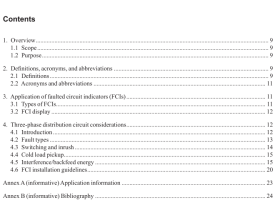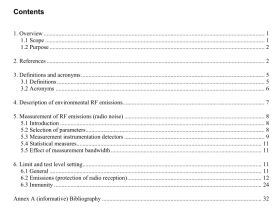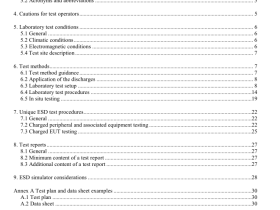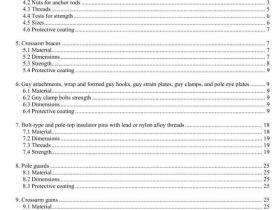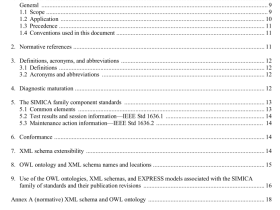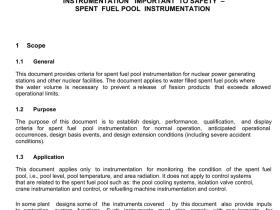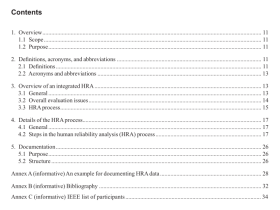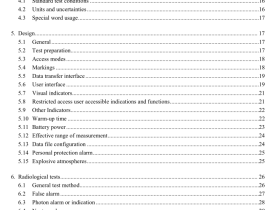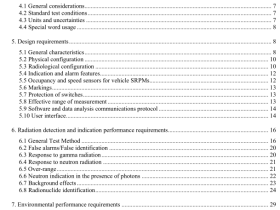IEEE Std 117 pdf download
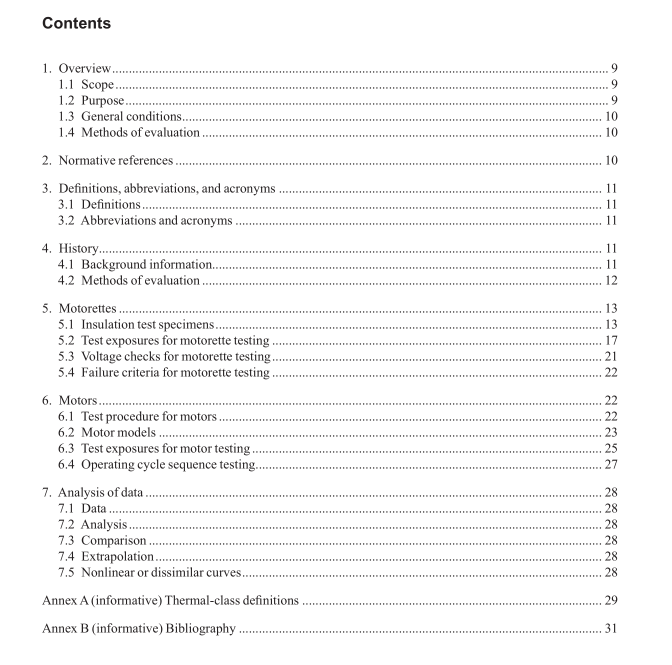
IEEE Std 117 pdf download IEEE Standard Test Procedure for Thermal Evaluation of Systems of Insulating Materials for Random- Wound AC Electric Machinery
1. Overview
1.1 Scope This is a standard test procedure for the thermal evaluation and qualifcation of electrical insulation systems (EISs) for random-wound ac electric machinery, where thermal degradation is the dominating aging factor. This procedure compares the relative thermal performance of a candidate EIS to that of a reference EIS. This standard covers insulation systems for such machinery with operating voltage of up to 600 V at 50/60 Hz. This standard provides a statistical method for establishing a relative life-temperature relationship for an insulation system. To have any signifcance, the reference insulation system must be supported with adequate feld-ser- vice data. This procedure is intended to evaluate insulation systems for use in air-cooled, random-wound ac electric machinery with “usual service conditions.” This procedure, on its own, does not cover insulation systems such as exposure to conducting contaminates, radiation, inverter applications, or operation in oils, refrigerants, or other media that potentially degrade insulating materials.
1.2 Purpose The purpose of this standard procedure is to classify insulation systems in accordance with their temperature limits by test, rather than by chemical composition. This test procedure has been prepared to outline useful methods for the evaluation of systems of insulation for random-wound stators of rotating electric machines. The motorette procedure described is used for the evaluation of EISs.
1.3 General conditions The concepts implemented in this recommended practice are based on IEEE Std 99™. 1 The intent of this procedure is to classify candidate insulation systems by comparing them to reference insula- tion systems in machines with service-proven performance. Temperature classifcation of insulation systems are designated 105 °C, 130 °C, 155 °C, 180 °C, 200 °C, 220 °C, 240 °C, and above 240 °C, previously referred to as temperature classifcations Class A, B, F, H, N, R, S or C categories, respectively (see Annex A for further information).
It is expected that the several insulating materials or components that form any insulation system to be evaluated by these procedures will frst be screened by the appropriate test procedures for each type of material.
Thermal indices for discrete insulating materials can be obtained by following the procedures shown in IEEE Std 98™. Thermal indices of insulating materials cannot be used to classify insulation systems. They are to be consid- ered only as screening tests for this system test.
1.4 Methods of evaluation This test procedure describes test models suitable for use in random-wound insulation tests. The procedure recommends a series of heat exposures to which the test models may be subjected to represent the cumulative effects of long service, using accelerated aging parameters. Procedures are given for applying periodic voltage checks preceded by periods of mechanical stress and moisture to establish the end point of insulation life by electric failure. To obtain an acceptable statistical average, for each chosen temperature of heat exposure, an adequate number of samples should be carried through the test procedure until failure occurs.
It is important that the tests on the samples be performed at a minimum of three different aging (exposure) temperatures for each insulation system to be evaluated. After the fnal results of the tests are known and the test life hours have been projected to a rated temperature, the ratio of the aging (exposure) hours of the candidate EIS compared to the aging (exposure) hours of the reference EIS can provide a rough measure of the service life expectancy of the candidate system in relation to that of the reference system. Based on the current state of the art in terms of test procedures, no accurate prediction of actual service life can be made from test results alone. This procedure will permit approximate comparisons only, and cannot be relied upon to completely determine the merits of any particular insulation system. Such information can be obtained only from the experience of extended service. By following the general procedures outlined herein, the temperature classifcation in which any candidate insulation system belongs can be determined.
2. Normative references
The following referenced documents are indispensable for the application of this document, i.e., they must be understood and used. For dated references, only the edition cited applies. For undated references, the latest edition of the referenced document (including any amendments or corrigenda) applies. IEEE Std 1, IEEE Recommended Practice—General Principles for Temperature Limits in the Rating of Elec- trical Equipment and for the Evaluation of Electrical Insulation. 2,3
